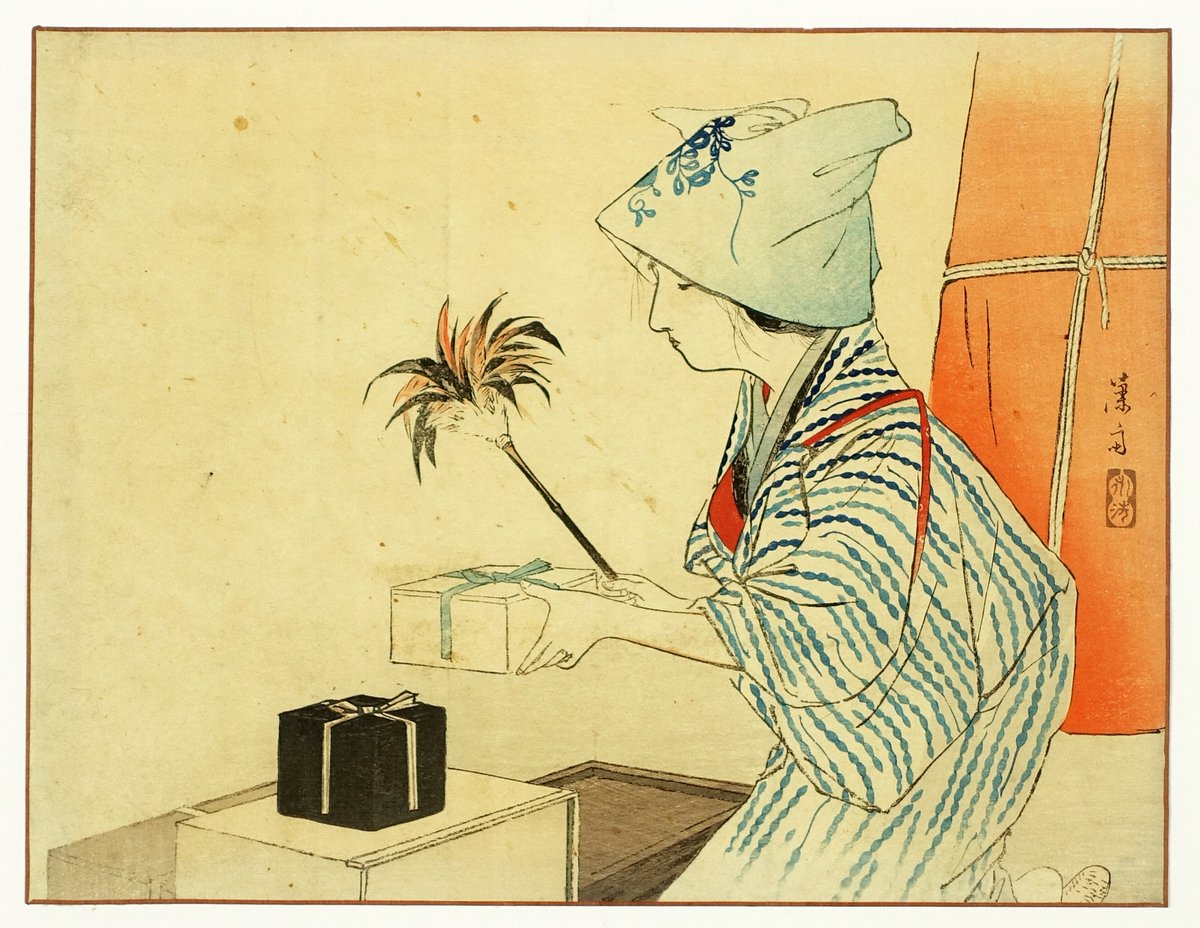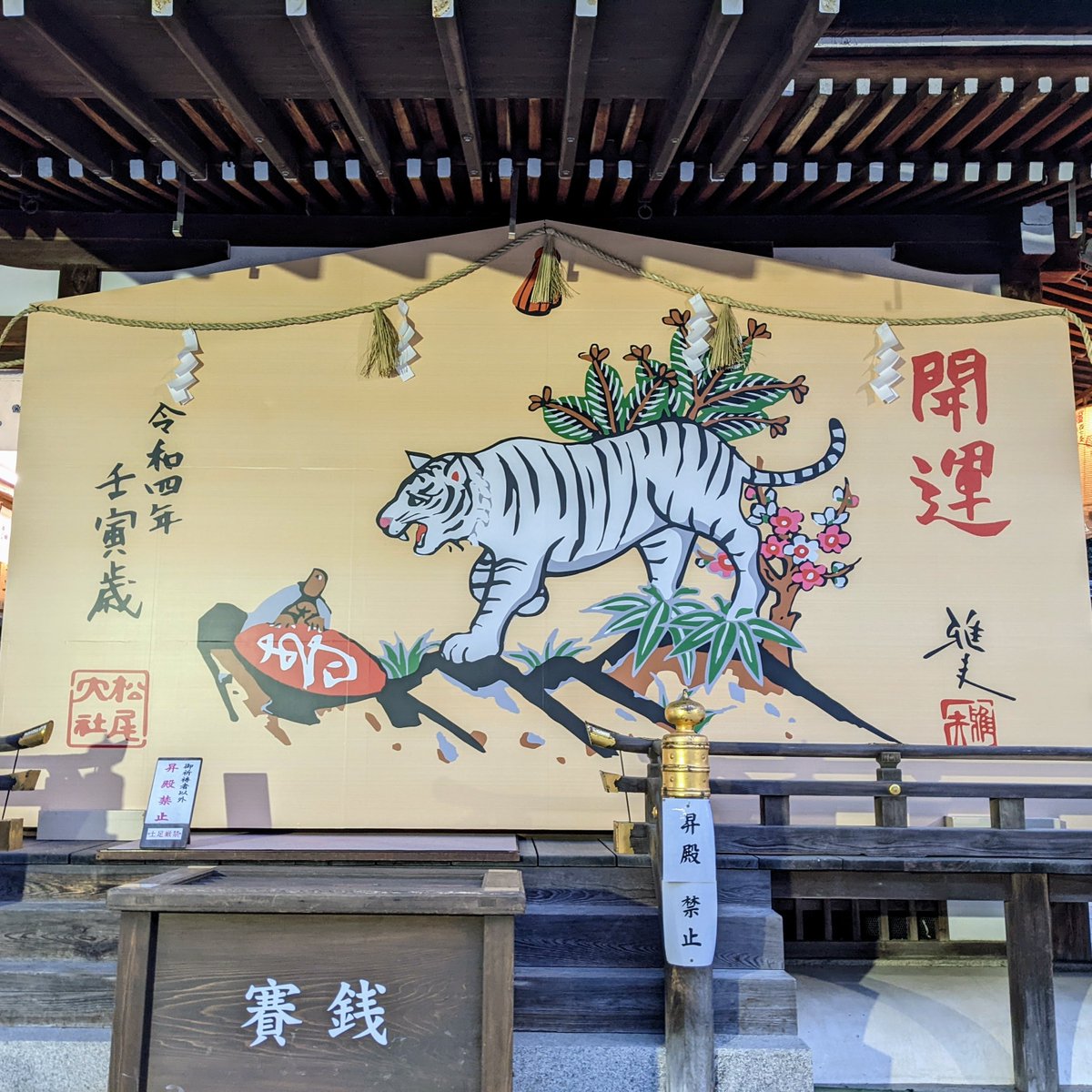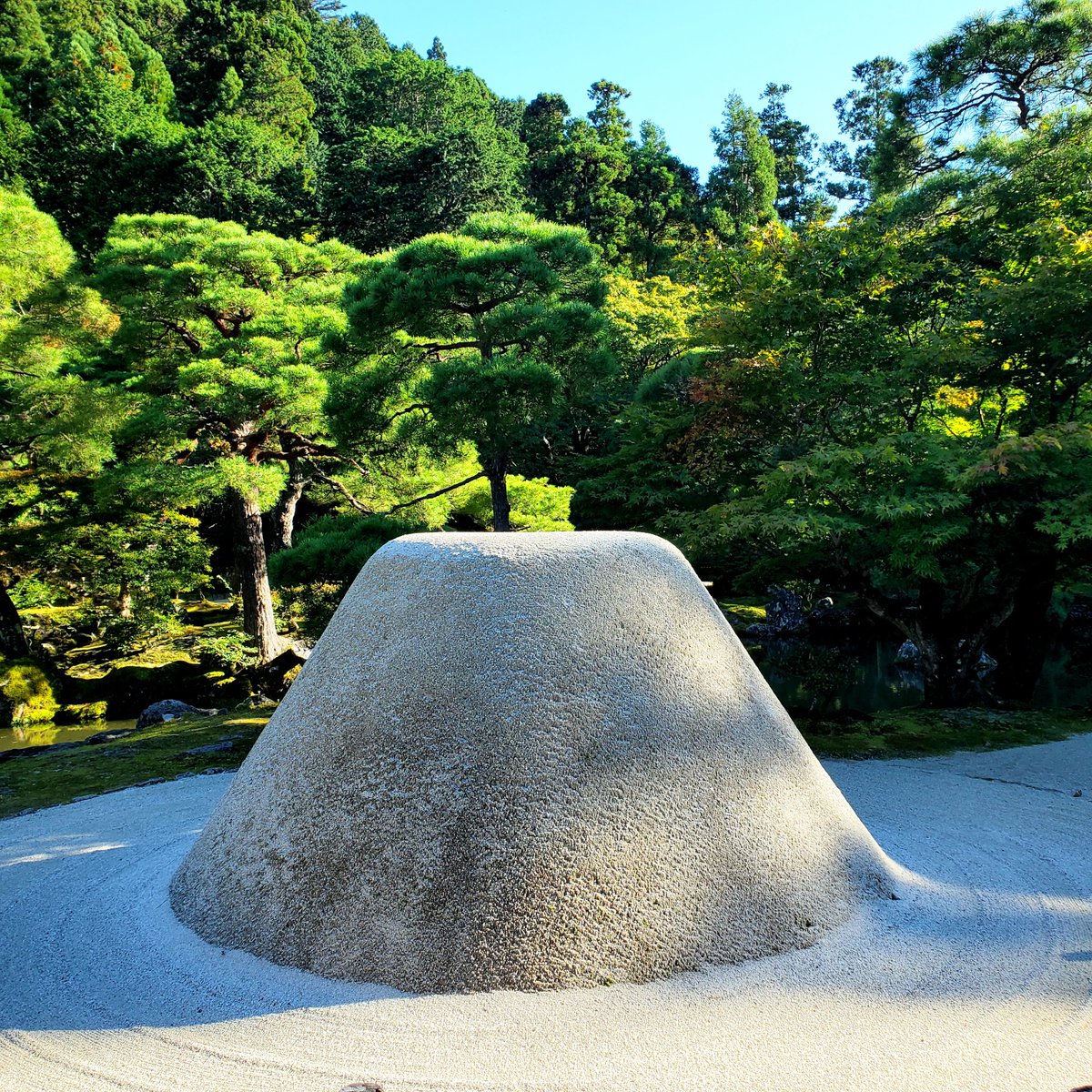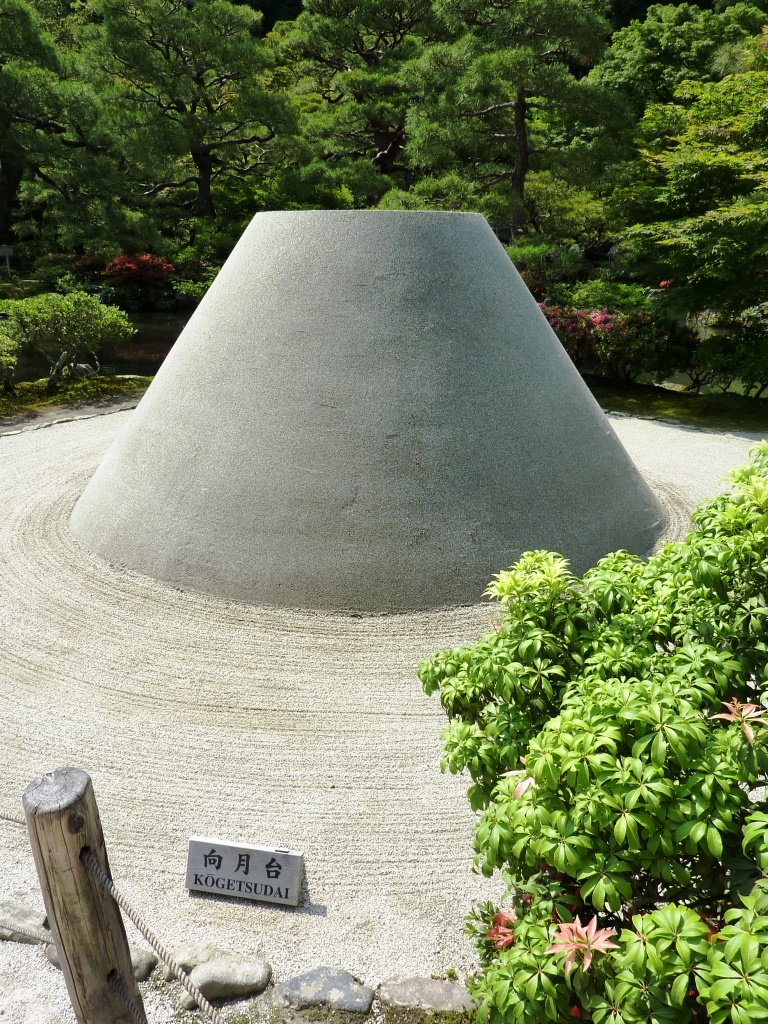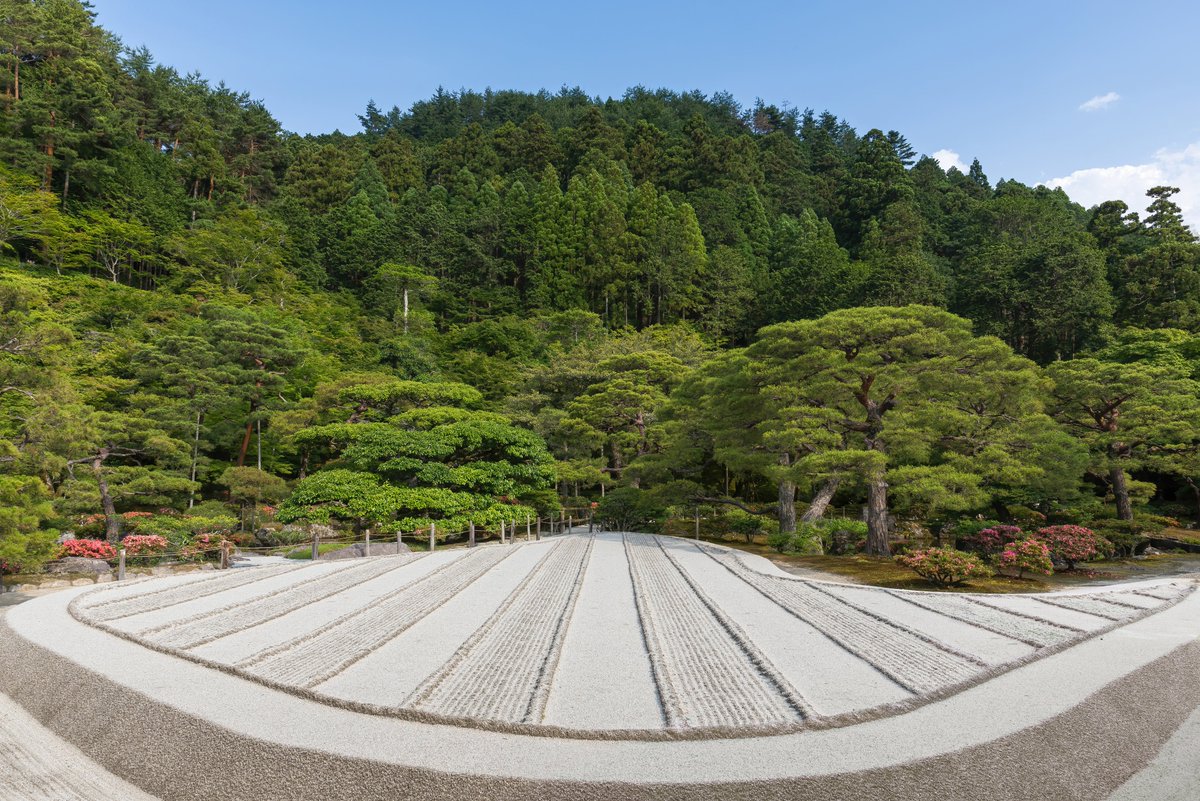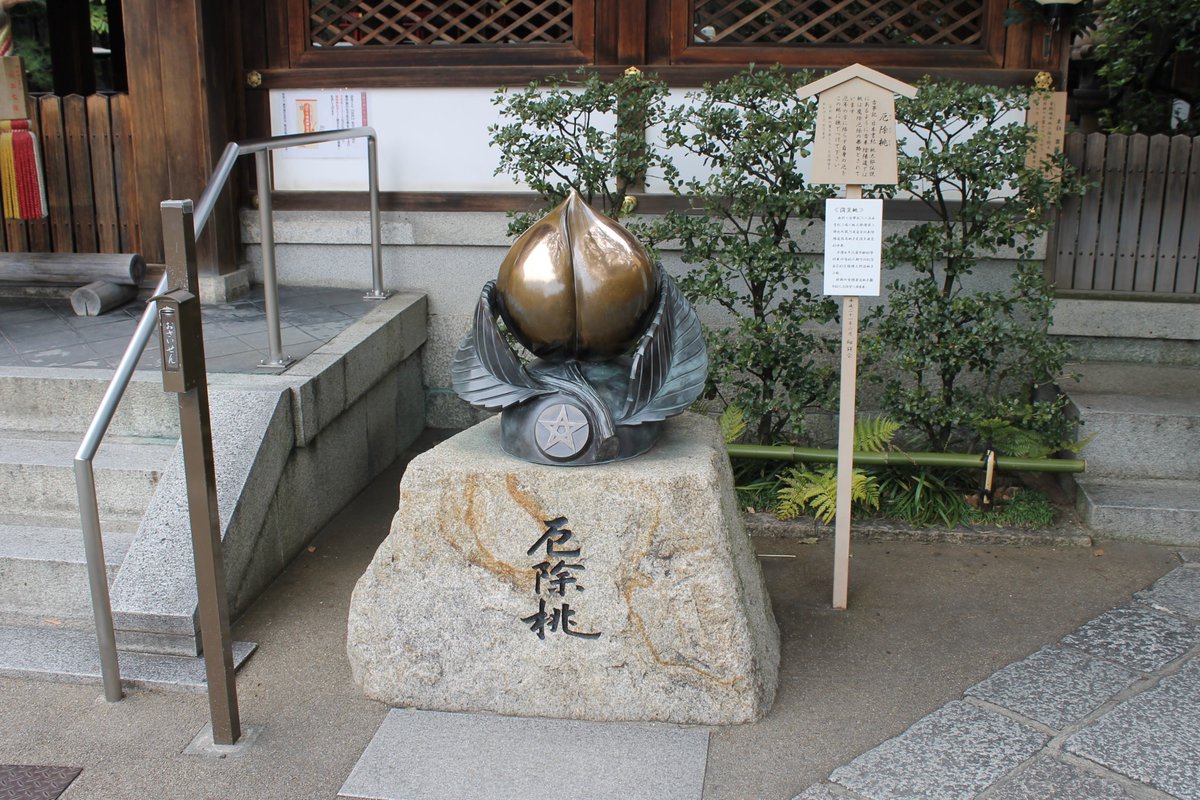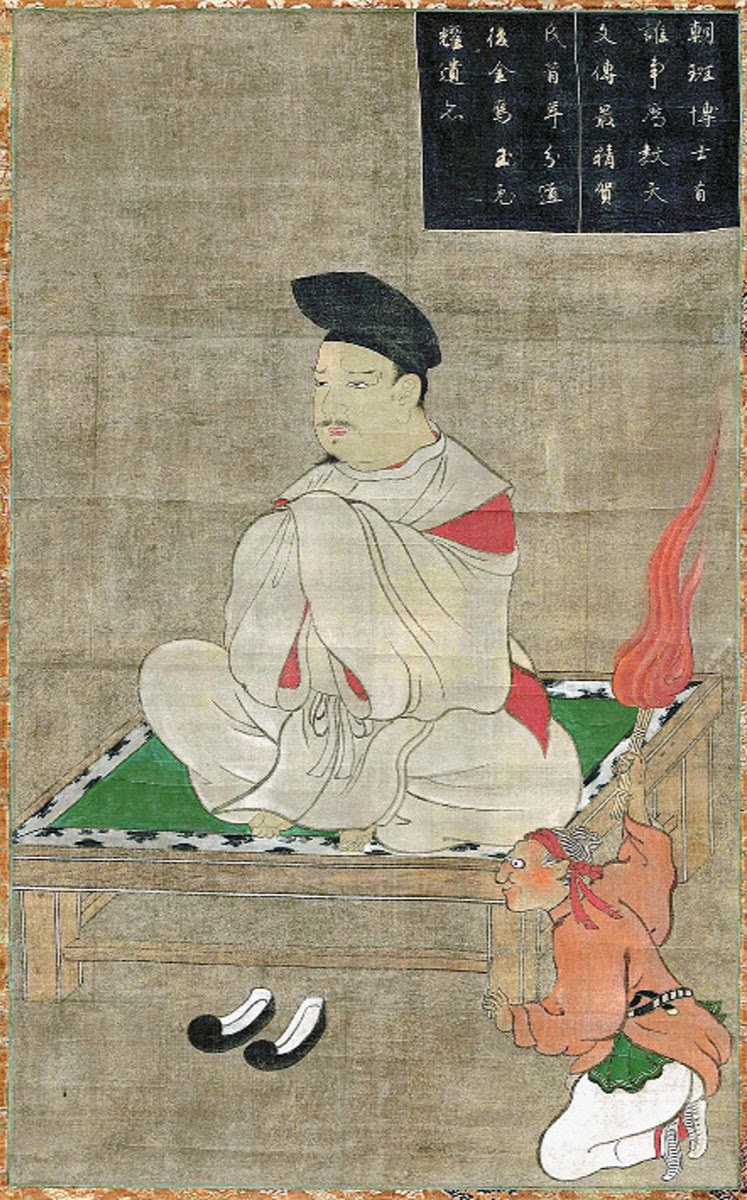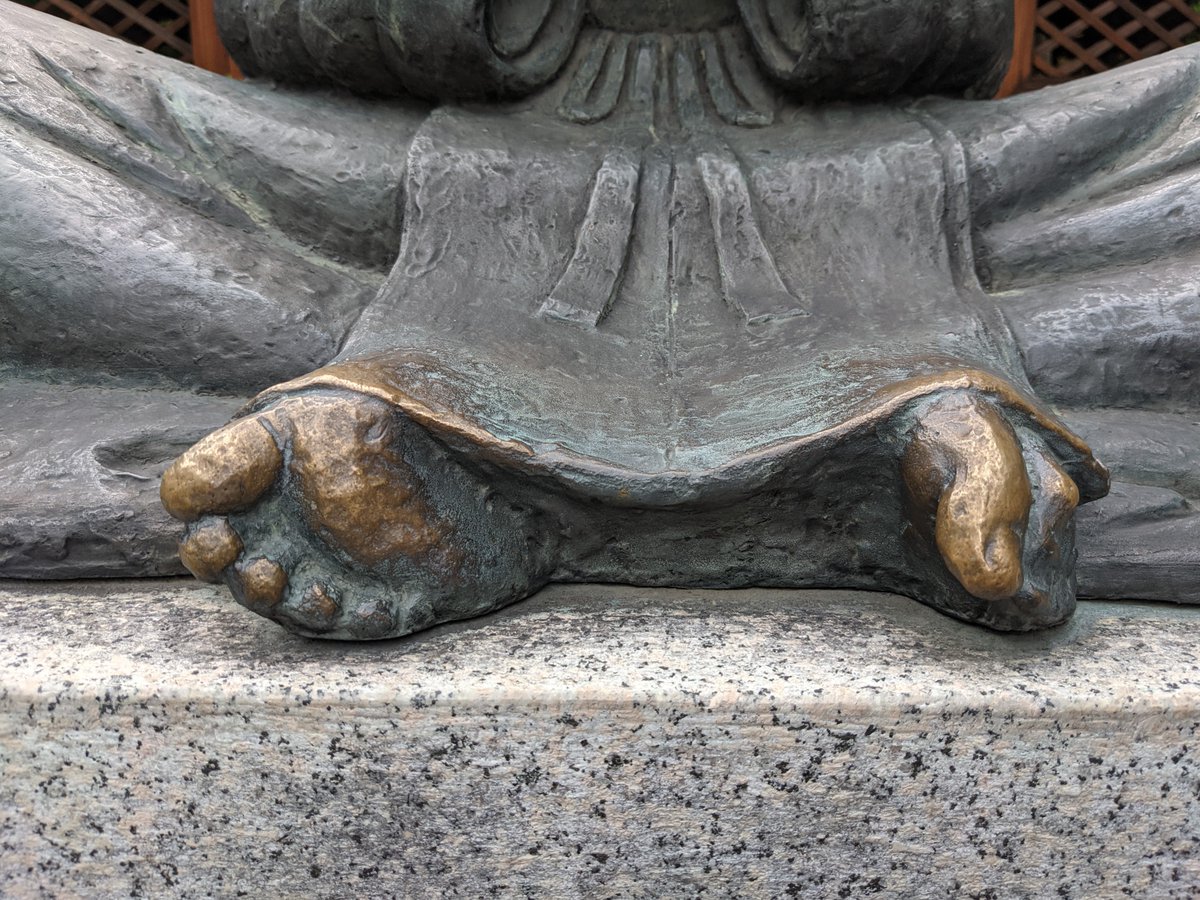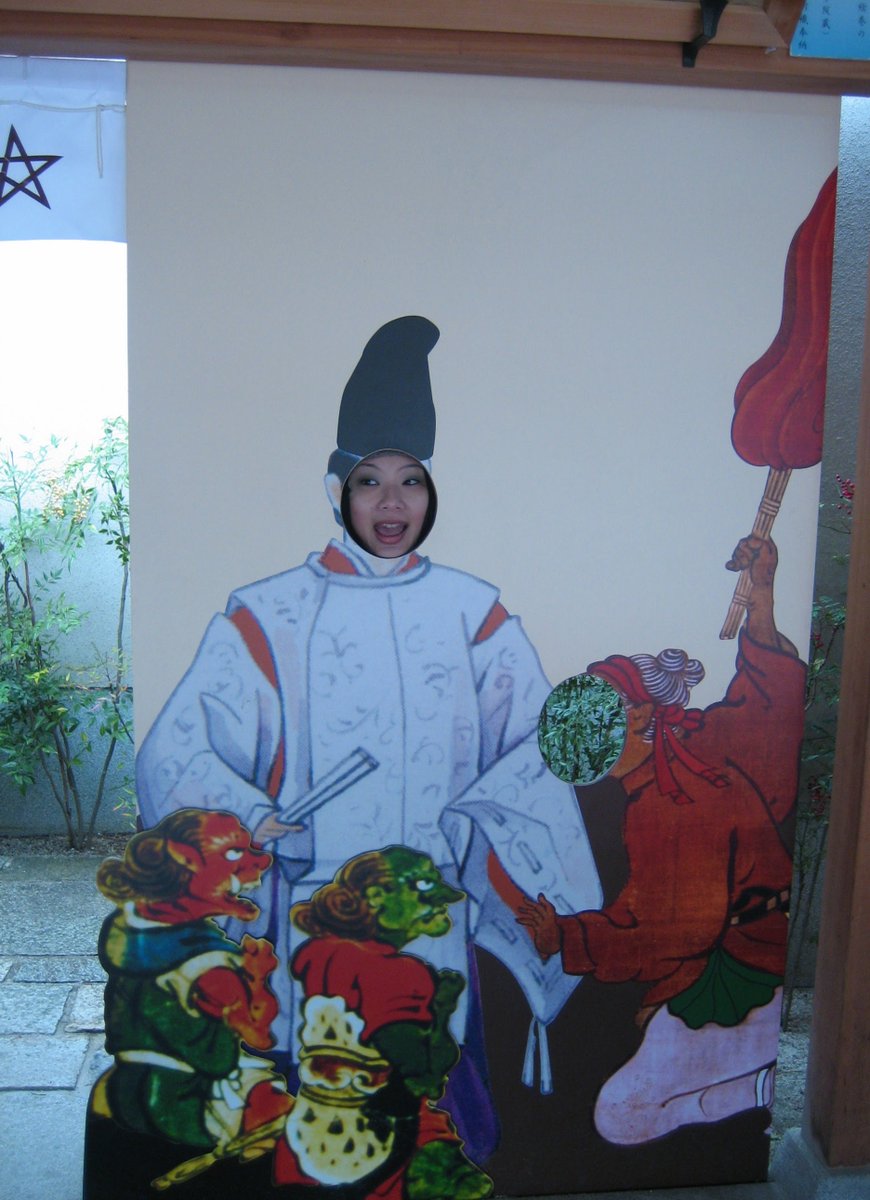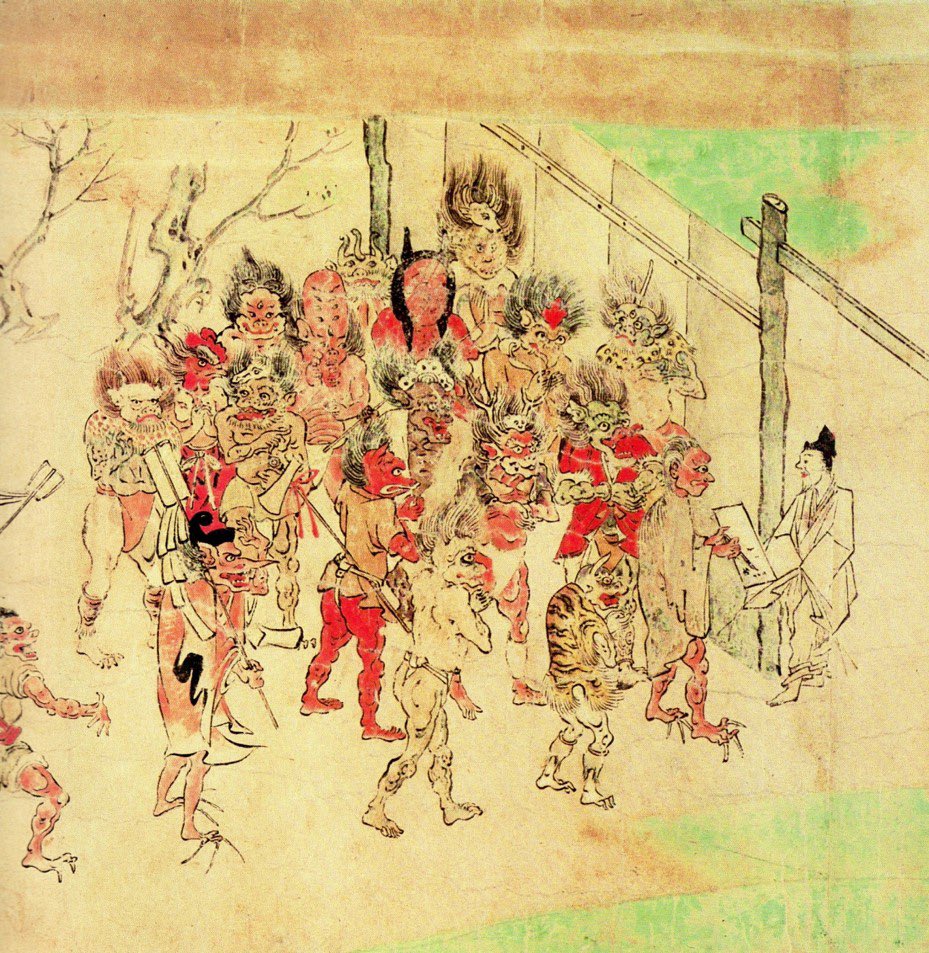
🍵HANGING THE MOSS🌱
Just as people are beginning to take down their New Year decorations, a bundle of green appears in the tea room.
Known in English as ground pine, wolf’s-foot clubmoss and stag’s-horn clubmoss, 'hikage-no-kazura' (日陰蔓) will adorn the alcove for a few weeks.



Just as people are beginning to take down their New Year decorations, a bundle of green appears in the tea room.
Known in English as ground pine, wolf’s-foot clubmoss and stag’s-horn clubmoss, 'hikage-no-kazura' (日陰蔓) will adorn the alcove for a few weeks.




With the spread of Omicron, we've put our official Hatsugama (初釜 first tea ceremony of the year) on hold😑...but rather than feeling glum, we've been toasting the fresh year here in the office with Nijō Wakasaya's (二條若狭屋) 'New Year Amabie' (アマビエ~ニューイヤー~) 🥳🎉 




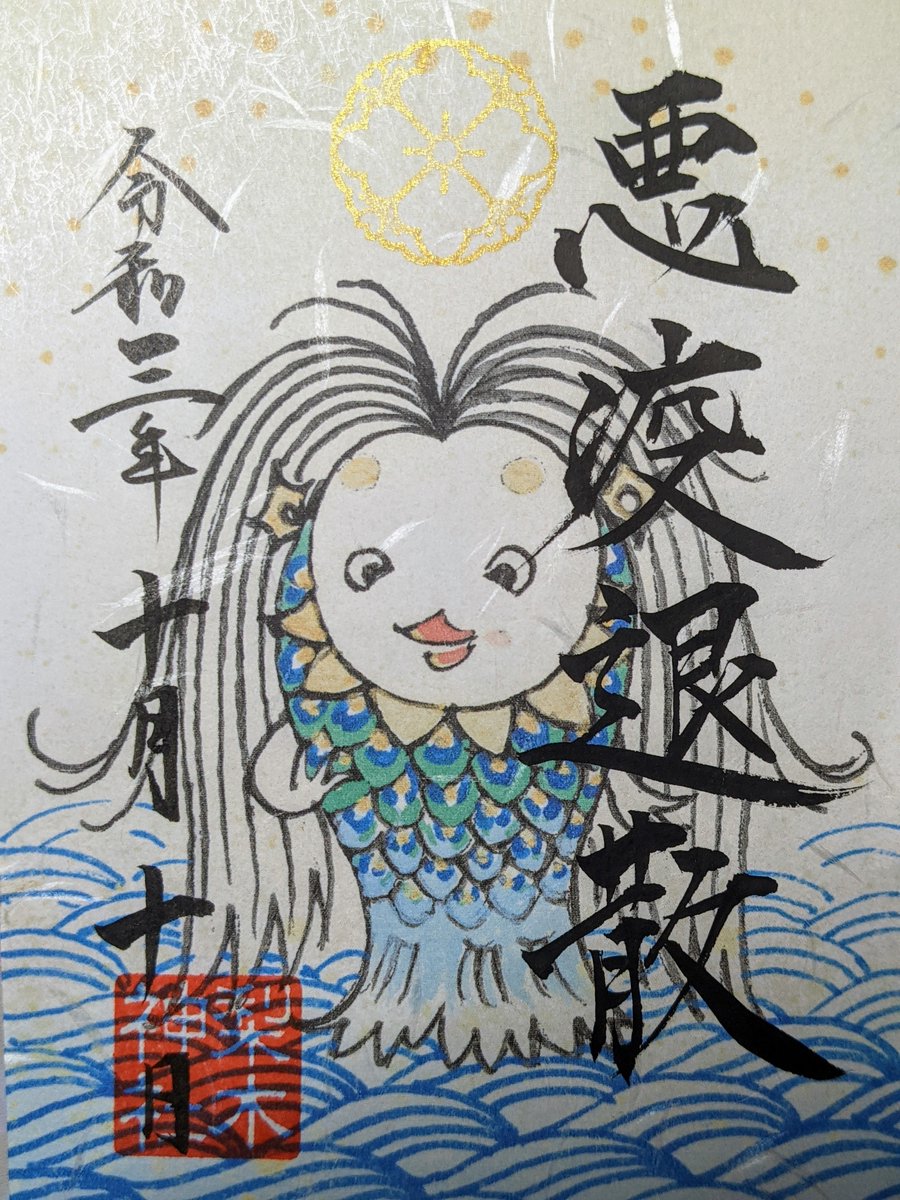


Nijō Wakasaya's seasonal Amabie-themed sweets have been a constant delight throughout the pandemic.
➡️@616wakasaya
'New Year Amabie' mimics a kagami mochi (鏡餅)🍊🤣
A previous thread about the disease-deflecting 'deity' Amabie⬇️
#Japan #Amabie #和菓子



➡️@616wakasaya
'New Year Amabie' mimics a kagami mochi (鏡餅)🍊🤣
A previous thread about the disease-deflecting 'deity' Amabie⬇️
https://twitter.com/camelliakyoto/status/1445549178646532105?s=20
#Japan #Amabie #和菓子




in the eaves
the remnants still cling...
blooming New Year's herbs
雨だれの名ごりおしさよ花わかな
-小林一茶.
Hikage-no-kazura is considered a symbol of strength and vitality...an apt display in this season, when thoughts turn to fresh beginnings.
Photo- ameblo.jp/nanakoarikawa/



the remnants still cling...
blooming New Year's herbs
雨だれの名ごりおしさよ花わかな
-小林一茶.
Hikage-no-kazura is considered a symbol of strength and vitality...an apt display in this season, when thoughts turn to fresh beginnings.
Photo- ameblo.jp/nanakoarikawa/




The plant features in the story of Amaterasu (天照大神), the 'Sun Goddess', hiding away in the 'Heavenly Rock Cave'.
Her brother Susanoo (須佐之男), 'God of the Sea & Storms', attempted (unsuccessfully) to drag her out by ensnaring her long sleeves in hikage-no-kazura (日陰鬘).



Her brother Susanoo (須佐之男), 'God of the Sea & Storms', attempted (unsuccessfully) to drag her out by ensnaring her long sleeves in hikage-no-kazura (日陰鬘).




It's recorded that hikage-no-kazura was used originally to adorn the hair of the dancers that performed in the palace harvest celebrations in the 11th month.
4 or 5 unmarried women from noble families participated in the Gosechi Dances (五節舞).
Photos🙇♂️-omatsurijapan.com



4 or 5 unmarried women from noble families participated in the Gosechi Dances (五節舞).
Photos🙇♂️-omatsurijapan.com




In Heian times the vines were substituted with silk braids & paper mulberry bark.
The dancers wore hikage-no-kazura in honour of Japan's first dancer Ame-no-Uzume (天宇受売命). The goddess (of dawn/mirth & the arts) wore the vine during her dance to lure Amaterasu from the cave.



The dancers wore hikage-no-kazura in honour of Japan's first dancer Ame-no-Uzume (天宇受売命). The goddess (of dawn/mirth & the arts) wore the vine during her dance to lure Amaterasu from the cave.




The closest major shrine to our office (at Camellia Garden teahouse) is Kitano Tenmangū (北野天満宮), so we headed over for hatsumōde (初詣 the 'first shrine visit').
Now that the New Year crowds have ebbed away, there is a lot more time to admire the fresh hana-chōzu (花手水).



Now that the New Year crowds have ebbed away, there is a lot more time to admire the fresh hana-chōzu (花手水).




It is absolutely not New Year without hanabiramochi (葩餅), especially for practitioners of tea ceremony.
This year Nao-san is going for some kind of record...
...at the last count she'd eaten hanabiramochi from 6 stores.
And January is far from over😂
➡️



This year Nao-san is going for some kind of record...
...at the last count she'd eaten hanabiramochi from 6 stores.
And January is far from over😂
➡️
https://twitter.com/camelliakyoto/status/1477810796713623556?s=20




There are many auspicious symbols at this time of year🎍🐶🤣
Senbon Tamajuken (千本玉壽軒) utilize two for their 'matsu-no-yuki' (松の雪 'snowy pine') and 'hatsu-warai' (初笑 'the first laugh of the year').
This🧵is all about the use of pine at New Year⬇️




Senbon Tamajuken (千本玉壽軒) utilize two for their 'matsu-no-yuki' (松の雪 'snowy pine') and 'hatsu-warai' (初笑 'the first laugh of the year').
This🧵is all about the use of pine at New Year⬇️
https://twitter.com/camelliakyoto/status/1475991185936494593?s=20




The kanji for laugh '笑' is made up of the characters for bamboo '竹' & dog '犬', & thus both images are used for luck. Dogs are also used as charms for an easy childbirth.
'笑' regularly appears on New Year decorations, inviting happiness into the home⬇️




'笑' regularly appears on New Year decorations, inviting happiness into the home⬇️
https://twitter.com/camelliakyoto/status/1476042100999598081?s=20




Some of you may have seen images of small dogs with bamboo baskets (笊 'zaru') on their heads.
'Zaru-kaburi inu' (笊かぶり犬), often papier-mâché, are a play on words...
...if you break the character '笊' (like 笑) into its component parts it is literally bamboo on a dog (竹 犬).



'Zaru-kaburi inu' (笊かぶり犬), often papier-mâché, are a play on words...
...if you break the character '笊' (like 笑) into its component parts it is literally bamboo on a dog (竹 犬).




'Zaru' (笊) were commonly bought by parents or relatives around the same time a newborn was taken for their first shrine visit.
The baskets were hung by the baby's bed, a charm to let any sickness or troubles flow away just like water through a colander.
#Japan
The baskets were hung by the baby's bed, a charm to let any sickness or troubles flow away just like water through a colander.
#Japan
• • •
Missing some Tweet in this thread? You can try to
force a refresh






























